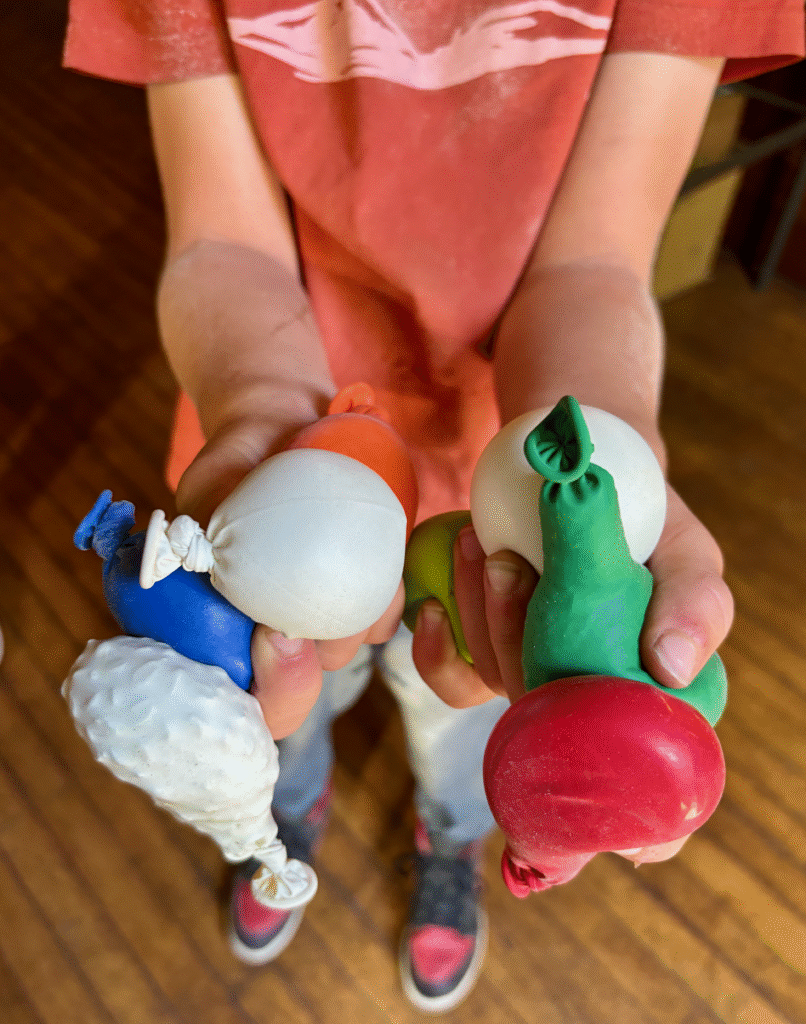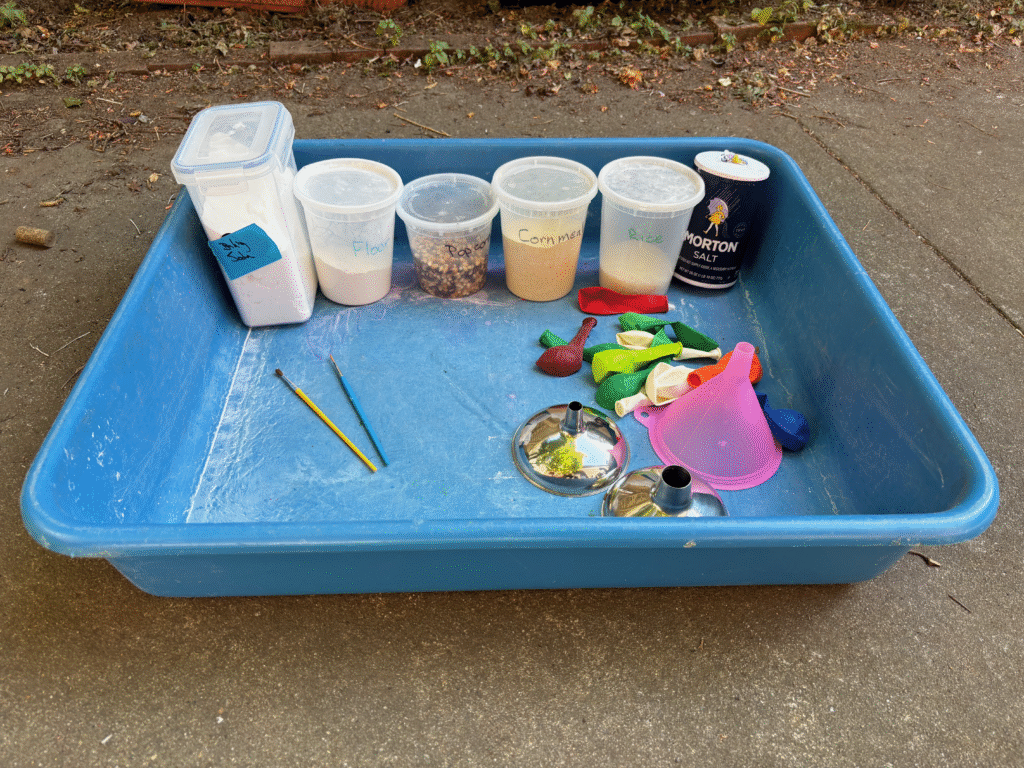This is one cool activity!

This Activity Is Great For…
Ages: 6 and up
Modality: Individual, Dyadic, Family, Group
Therapeutic Stage: Assessment, Working, Termination
Level of Directiveness
Child | Therapist |
|---|
Note: This activity requires set up and instruction from the therapist, then the kids take over and make it their own.
The take-away makes this a nice termination activity.
What is a stress ball?
A stress ball is a small fidget toy that can be used to manage stress through tactile stimulation. A DIY stress ball is easy to make by filling a balloon with dry materials and tying it off. The stress ball can be kept in a pocket, on a desk, in the car — wherever a person needs or wants to use a tactile fidget.
And the lab part?
The stress ball lab creates an opportunity to try out a number of different dry materials to create the best stress ball. The size, shape and weight of the individual particles of each material makes a huge difference to the feel of each stress ball. Lighter, finer powders tend to clump together inside the balloon when squeezed. Heaver particles like salt slide past each other more easily. Fine particles like baking soda make a very smooth feel in the hand. Larger one like lentils feel bumpy against the skin. The lab is a chance to experiment and find out what is most fun or calming fidget.
How to Set Up the Stress Ball Lab
To set up the lab, choose 4-6 different fillers that can be poured into a balloon. Materials can often be found in the kitchen. I like to choose items with a variety of sizes and weights so comparisons can be made. Fillers I have used so far include cornstarch, flour, cornmeal salt, sand, rice, lentils and popcorn kernels. Put a container of each filler you going to use in a large flat tub. For each participant add 5-6 balloons, a funnel and something long and skinny to help push the finer powders into the balloon. Bamboo skewers and think paintbrushes both work well for this. You’re all set!
To get started, explain briefly to the client what you are going to make (a stress ball) and demonstrate placing a balloon on the end of a funnel, choosing the first material to use for the stress ball. The children pick up quickly and will start experimenting.
You will notice that fillers with very fine particles, such as cornstarch or flour, are challenging to get into the balloon. That’s where bamboo skewers or paintbrushes will come in handy. Getting cornstarch or flour into the balloon takes some patience, but that’s part of what makes this activity worthwhile. Substances with larger, heavier particles, such as salt and rice, are much easier to coax into a balloon. When the bulb of the balloon is full, show the child how to tie it off. Stress ball number one is complete!
As stress balls with different fillers are complete, children will begin to squeeze and compare them to one another. Children will often extend the activity by combining different materials into a single balloon. They sometimes ask to write or draw faces on the balloons, so having a couple sharpies available is a plus and provides an expressive outlet for the children.

Benefits
Overall, stress ball lab is a great activity for both sensory-seeking and sensory-avoidant children. Children who enjoy much tactile input can use their hands to move the materials from container to funnel and into the balloon. Children who dislike direct tactile input can use scoops or spoons to avoid touching powdery or bumpy new things. Once the material is inside the balloon, the smooth surface of the balloon allows sensory-avoidant children to explore different textures and engage in tactile sensory play in a way that feels safe.
The stress ball lab creates a highly engaging and fun parallel play opportunity. In this way, it supports the attachment between parent and child, bonding between siblings, or fostering friendships among small groups of children.
Feel free to reach out and share your experiences.
Happy playing!
